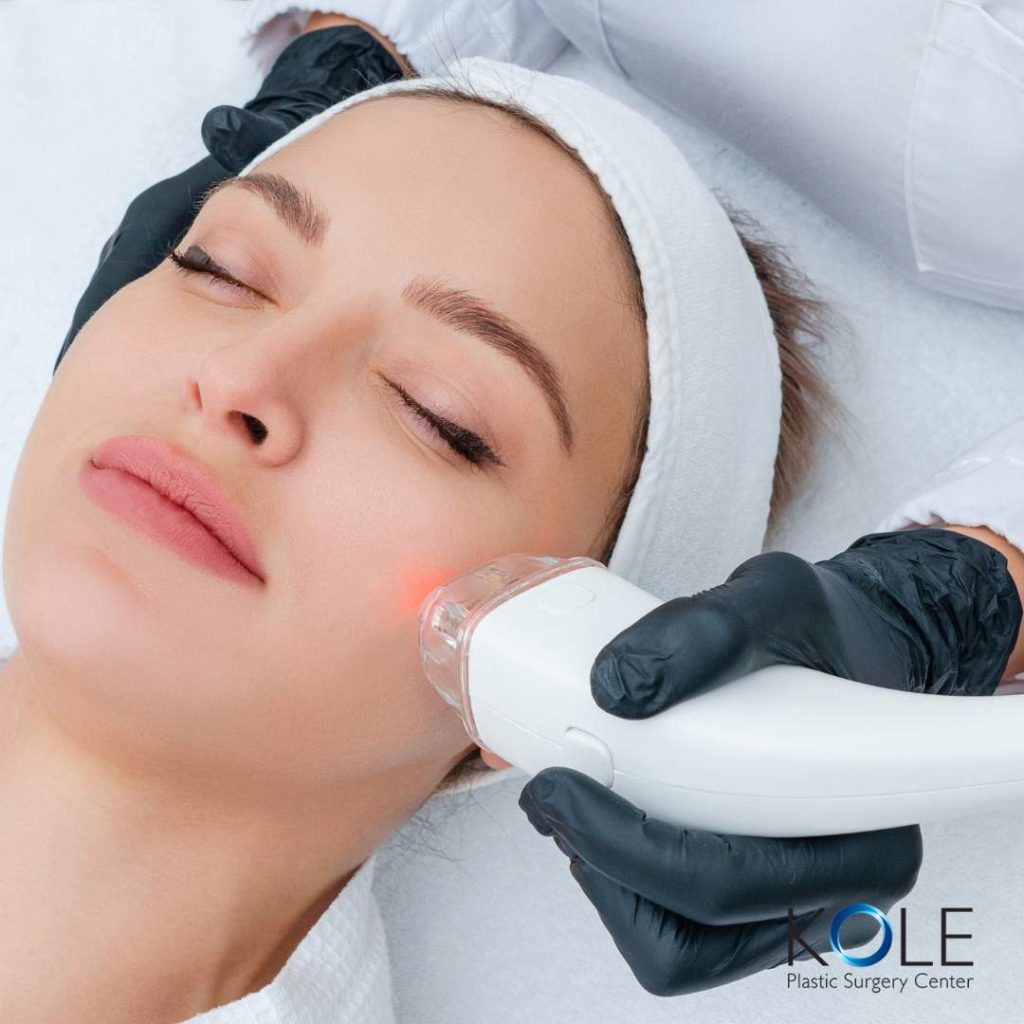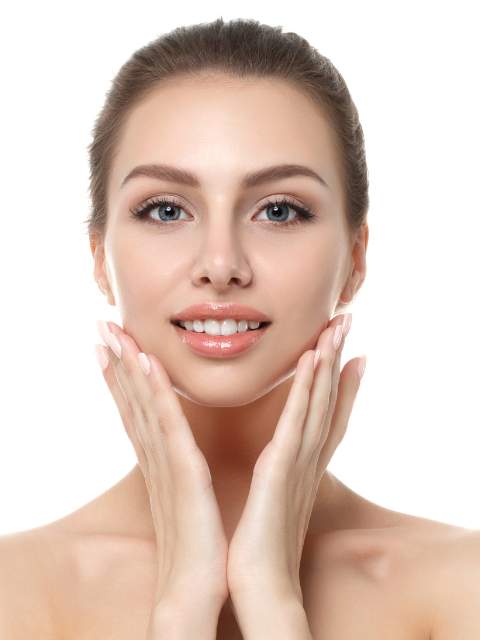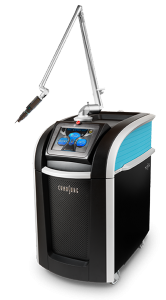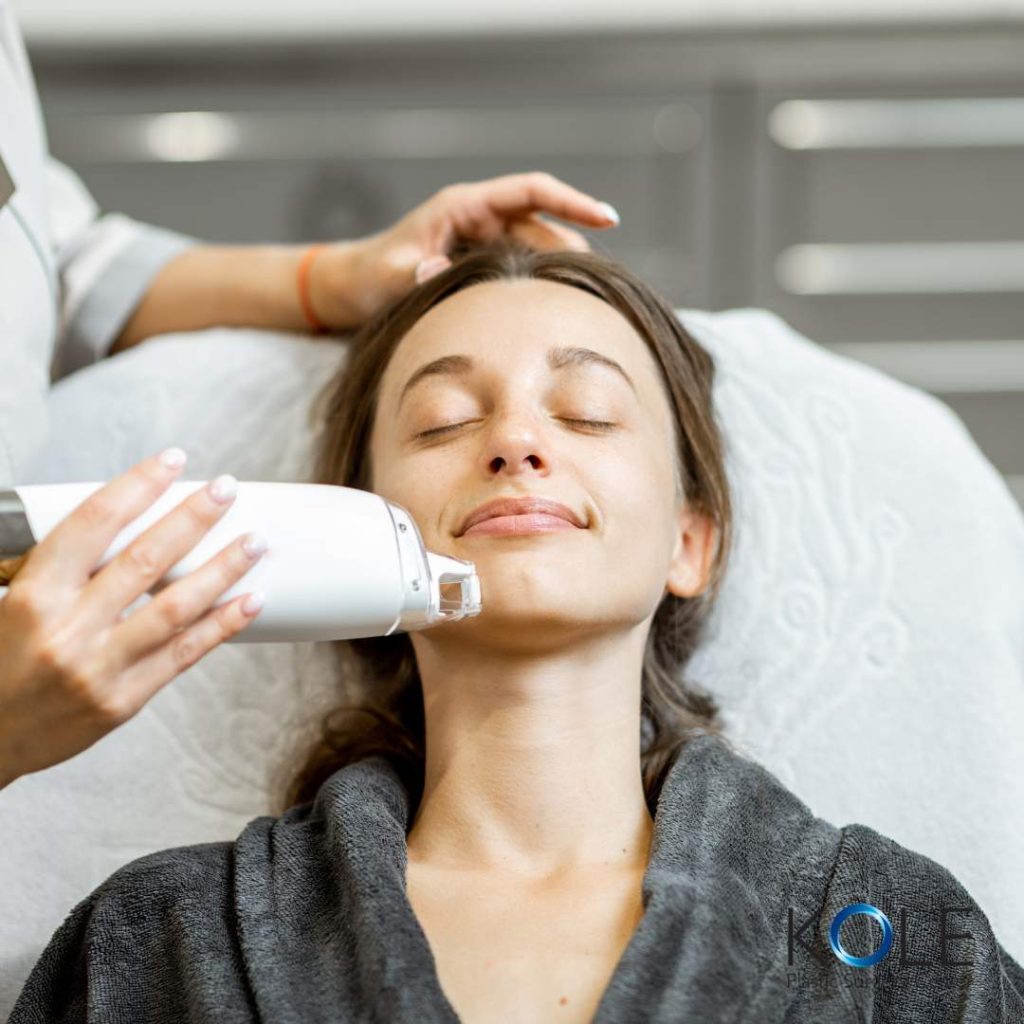
Centrally located in Southampton, PA and serving Philadelphia, Bucks, and Montgomery Counties, The Kole Plastic Surgery Center uses laser treatments for patients desiring skin rejuvenation.
At The Kole Plastic Surgery Center, patients can undergo the most advanced laser skin rejuvenation procedures designed to reduce their fine lines and wrinkles to improve areas of the skin that are affected by age, acne or sun damage. Top-of-the-line laser treatments at our facility are noninvasive processes that require only a short amount of time to perform and little to no downtime, making it easy to undergo this skin rejuvenation procedure.
Cosmetic laser enhancement procedures can improve several issues that patients are experiencing such as:
Dr. Edward Kole, a dual board-certified plastic surgeon, can meet with you during an initial private complimentary consultation to discuss your cosmetic enhancement goals. At this meeting, Dr. Kole will evaluate your needs and help you determine if laser skin rejuvenation is the best option for you.

The cost of laser resurfacing treatment varies depending on the extent of treatment and numbers of treatments necessary to achieve optimum results.
The Kole Plastic Surgery Center accepts cash, check, and credit card (MasterCard®, Visa®, American Express®, Discover®) as acceptable forms of payment.
Financing is also available through CareCredit®, United Medical Credit, and Advanced Care.
Rebuilding the natural protein in a patient’s skin that provides a firmer or more youthful appearance is possible with the concentrated laser energy beams of a laser resurfacing procedure that does not harm surrounding healthy tissue. The laser system used at The Kole Plastic Surgery Center offers accurate treatment to get rid of a patient’s aged and damaged skin to release the underlying healthier tissue while increasing their collagen levels.
While a few laser resurfacing procedures can require multiple treatments for the best results, the process is typically gentle enough to permit minimal downtime for patients who need to return to their daily lives quickly. Any swelling or redness from this skin rejuvenation treatment will fade, and our patients can control discomfort with topical creams.
Dr. Kole uses the PicoSure® Laser System.
The PicoSure® laser is used for:


Most facial lines and wrinkles develop near the mouth or around the eyes of aging patients, but the laser can be precisely controlled by Dr. Kole so that only these specific areas are targeted. A patient with black, brown or olive skin is at greater risk of pigmentation changes despite any form of cosmetic skin resurfacing. This is why Dr. Kole evaluates each patient individually and makes personalized recommendations concerning treatment.
Because treatment with Accutane in the past 12 to 18 months makes patients more prone to develop keloid scars, laser resurfacing is not appropriate. Dr. Kole also does not recommend this procedure for patients with current skin infections on the selected treatment area.
It is important for patients to understand that a laser resurfacing procedure does not prevent their skin from aging in the future or remove facial flaws completely. However, it will improve a patient’s appearance and self-confidence. In addition, these natural movements of the face will eventually cause new lines to form:
Dr. Kole suggests methods to preserve a patient’s laser resurfacing results such as protecting skin from the sun’s ultraviolet light or undergoing maintenance treatments that include a skin care system and a high-quality sunblock. Before a patient selects laser skin resurfacing, they must consider their expectations and discuss their goals with Dr. Kole.
Your new skin will usually remain bright pink to red in the weeks following the procedure. Dr. Kole may prescribe medications to make this color subside more rapidly. After approximately two weeks, patients can apply makeup gently to conceal temporary color changes. For some patients undergoing this procedure, the pinkness of their skin can remain for up to six months.
In a few cases, patients may develop sensitivity to makeup products used before laser resurfacing and must avoid these substances or change brands during or after the healing process.
The most important recommendation from Dr. Kole after laser resurfacing is to protect the treated skin from sunlight until the area heals. Applying lotions with a sun protection factor (SPF) of 15 or higher reduces the chances of experiencing new sun damage to the skin and also helps to maintain the laser resurfacing results. Wearing sunglasses with protective lenses that have 100 percent UVA and UVB filters to protect the skin around the eyes or hats with wide brims to shade the face is recommended.
Several months are required for patients to see the final results from their laser resurfacing treatment. After the pinkness of their skin fades, the patient notices improvements such as smoother skin that is more youthful in appearance.
A patient’s new skin is not immune to the effects of aging, but the results of laser resurfacing are long-lasting with the correct protection. With time, a patient’s face begins to develop new expression lines caused by their natural facial movements.
By following Dr. Kole’s skin care regimen along with avoiding sunlight, a patient is more likely to maintain a rejuvenated appearance after laser resurfacing. It is also possible to repeat laser resurfacing procedures to reduce any new damage that occurs.
Laser technologies have opened new possibilities for men and women in Southampton, PA, Philadelphia County, Bucks County, Montgomery County and surrounding areas of Bucks County, PA, who want to improve their skin, reduce signs of aging and address flaws on the surface of their skin. Board certified plastic surgeon, Kole Plastic Surgery, offers innovative laser treatments that help with all these aesthetic concerns and much more! Contact us today to schedule a personal consultation.
Schedule a Complimentary Consultation
Kole Plastic Surgery ©2005-2025. All Rights Reserved

215-315-7655
Kole Plastic Surgery Center
We firmly believe that the internet should be available and accessible to anyone, and are committed to providing a website that is accessible to the widest possible audience, regardless of circumstance and ability.
To fulfill this, we aim to adhere as strictly as possible to the World Wide Web Consortium’s (W3C) Web Content Accessibility Guidelines 2.1 (WCAG 2.1) at the AA level. These guidelines explain how to make web content accessible to people with a wide array of disabilities. Complying with those guidelines helps us ensure that the website is accessible to all people: blind people, people with motor impairments, visual impairment, cognitive disabilities, and more.
This website utilizes various technologies that are meant to make it as accessible as possible at all times. We utilize an accessibility interface that allows persons with specific disabilities to adjust the website’s UI (user interface) and design it to their personal needs.
Additionally, the website utilizes an AI-based application that runs in the background and optimizes its accessibility level constantly. This application remediates the website’s HTML, adapts Its functionality and behavior for screen-readers used by the blind users, and for keyboard functions used by individuals with motor impairments.
If you’ve found a malfunction or have ideas for improvement, we’ll be happy to hear from you. You can reach out to the website’s operators by using the following email
Our website implements the ARIA attributes (Accessible Rich Internet Applications) technique, alongside various different behavioral changes, to ensure blind users visiting with screen-readers are able to read, comprehend, and enjoy the website’s functions. As soon as a user with a screen-reader enters your site, they immediately receive a prompt to enter the Screen-Reader Profile so they can browse and operate your site effectively. Here’s how our website covers some of the most important screen-reader requirements, alongside console screenshots of code examples:
Screen-reader optimization: we run a background process that learns the website’s components from top to bottom, to ensure ongoing compliance even when updating the website. In this process, we provide screen-readers with meaningful data using the ARIA set of attributes. For example, we provide accurate form labels; descriptions for actionable icons (social media icons, search icons, cart icons, etc.); validation guidance for form inputs; element roles such as buttons, menus, modal dialogues (popups), and others. Additionally, the background process scans all the website’s images and provides an accurate and meaningful image-object-recognition-based description as an ALT (alternate text) tag for images that are not described. It will also extract texts that are embedded within the image, using an OCR (optical character recognition) technology. To turn on screen-reader adjustments at any time, users need only to press the Alt+1 keyboard combination. Screen-reader users also get automatic announcements to turn the Screen-reader mode on as soon as they enter the website.
These adjustments are compatible with all popular screen readers, including JAWS and NVDA.
Keyboard navigation optimization: The background process also adjusts the website’s HTML, and adds various behaviors using JavaScript code to make the website operable by the keyboard. This includes the ability to navigate the website using the Tab and Shift+Tab keys, operate dropdowns with the arrow keys, close them with Esc, trigger buttons and links using the Enter key, navigate between radio and checkbox elements using the arrow keys, and fill them in with the Spacebar or Enter key.Additionally, keyboard users will find quick-navigation and content-skip menus, available at any time by clicking Alt+1, or as the first elements of the site while navigating with the keyboard. The background process also handles triggered popups by moving the keyboard focus towards them as soon as they appear, and not allow the focus drift outside it.
Users can also use shortcuts such as “M” (menus), “H” (headings), “F” (forms), “B” (buttons), and “G” (graphics) to jump to specific elements.
We aim to support the widest array of browsers and assistive technologies as possible, so our users can choose the best fitting tools for them, with as few limitations as possible. Therefore, we have worked very hard to be able to support all major systems that comprise over 95% of the user market share including Google Chrome, Mozilla Firefox, Apple Safari, Opera and Microsoft Edge, JAWS and NVDA (screen readers).
Despite our very best efforts to allow anybody to adjust the website to their needs. There may still be pages or sections that are not fully accessible, are in the process of becoming accessible, or are lacking an adequate technological solution to make them accessible. Still, we are continually improving our accessibility, adding, updating and improving its options and features, and developing and adopting new technologies. All this is meant to reach the optimal level of accessibility, following technological advancements. For any assistance, please reach out to